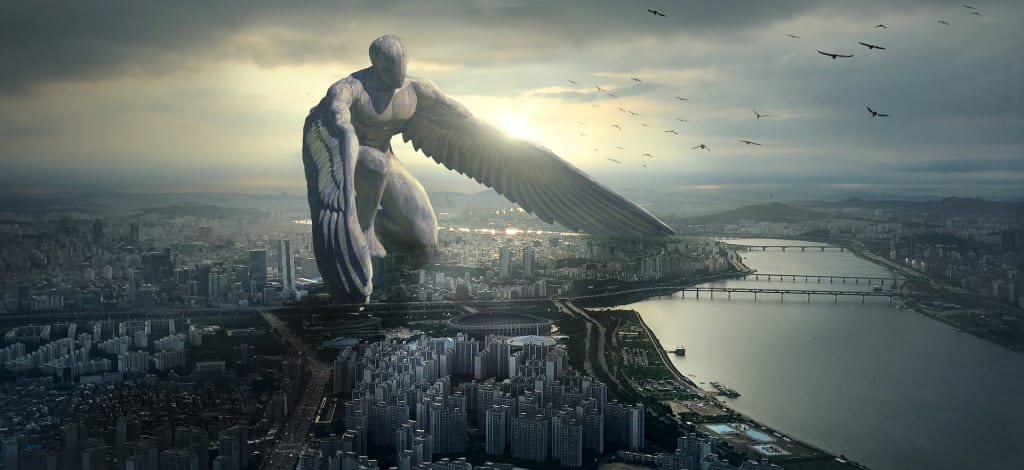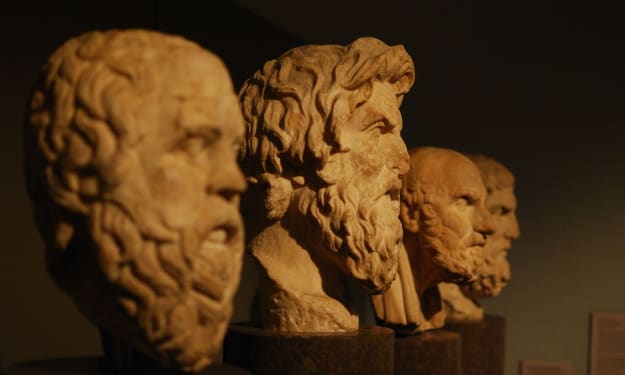Calvino and Fantasy
Italo Calvino's production

In 1982 Italo Calvino received the World Fantasy Award. The interest in the fantastic, and the fairy tale in particular, runs through all his literary production, proving that, he was commissioned to collect the fairy tales of popular tradition in a book. In fact, his “Italian fairy tales” contains 200 stories of folklore from all regions of Italy.
For his narrative, his friend Vittorini, with whom he directed “Il Menabò” from 59 to 65, speaks of “fairy-tale realism.” Vittorini himself, along with Pavese, is one of the authors who most influenced Calvino.
The first work, Il sentiero dei nidi di ragno, “The path of the spider nests” of 1947, has as its protagonist Pin who, with his partisan adventures, is a picaresque figure. The search for objectivity never ends in the bare facts, the mythical and fairytale dimension is always present. The novel fits into the happy, fantastic and adventurous vein of childhood-inspired fiction (started in the climate of Solaria magazine as early as the 1930s.) Here Calvino begins to experience the dissociation of reading levels, with the mix of cultured and popular forms.
Even the tales of Ultimo viene il corvo “Last the crow comes”, of 1949, cover the events of the Resistance with a fabulous tone, which reveals the originality with which Calvino moves within the neorealism, although evident, the latter, in certain realistic crudities. Calvino has, in fact, covered all the literary tendencies of the twentieth century, from Neorealism to Postmodernism, always remaining at a critical distance, in a subjective path.
Fable and history, which were united in the youth books, are divided. On the one hand Calvino continues on the path of historical knowledge, in stories such as L’entrata in guerra “The entry into the war” (1954), La speculazione edilizia “Building speculation” (1957), Il giorno di uno scrutatore “The day of a scrutinizer” on the other he experiences the fable. Even the first road, however, is not really naturalistic and Calvino abandons it definitively for the fantastic, choosing irregular characters, out of historical reality.
Il visconte dimezzato “The halved viscount”, of 1951, is the story of a man who returns from the war reduced half of himself, cut lengthwise. The escaped half is alive and good, the halved one is cruel. The two halves fight each other and finally rebuild a whole man. The narrative proceeds on two levels: the literal-narrative and the symbolic-allegorical one.
Il barone rampante “The rampant baron” of 1957, is the story of a boy, Cosimo di Rondo, who climbs a tree for fun and decides not to go down to the ground anymore. Jumping from tree to tree he spends his whole life and also manages to witness historical events such as the French revolution and Napoleon’s wars. Halfway between heaven and earth, in an excellent position to see and judge, he creates the pathos of distance which in Calvino is a guarantee of pure, uncontaminated knowledge, and is also, together, a sign of alienation of man and Enlightenment reason.
“In short, the substance of the story wants to be a safeguard of utopia and reason. It arose, in fact, as a model on the basis of Propp, Levi-Strauss and then semiology.” (R.Luperini)
Marcovaldo o le stagioni in città “Marcovaldo or the seasons in the city” of 1963 is an ambiguous book, suspended between invention and ideology. It consists of 20 short stories, each short story dedicated to a season. The cycle of the 4 seasons is repeated in the book 5 times.
All the novels have the same protagonist — Marcovaldo in fact — a funny and melancholic figure, and the same pattern that follows the narrative structure of the stories in cartoons of children’s newspapers. In the middle of a concrete and asphalt city, Marcovaldo goes in search of nature. What he finds is a spiteful, counterfeit nature, compromised with artificial life.
Marcovaldo is not well defined, he is a simple man, a man of Nature, perhaps an immigrant.
“This Marcovaldo had an eye unsuitable for city life: signs, traffic lights, shop windows, illuminated signs, posters, although they were studied to catch the eye, never caught his gaze that seemed to flow over the desert sands. Instead, a leaf that turned yellow on a branch, a feather caught on a tile, never escaped him: there was no horsefly on the back of a horse, a worm hole in a table, fig peel squashed on the pavement that Marcovaldo did not notice, and did not make an object of reasoning, discovering the changes of the season, the desires of his soul, and the miseries of his existence.”
The scheme of the short stories is precise:
Marcovaldo feels the resurgence of the seasons in the atmospheric events and in the slightest signs of an animal and vegetable life within the big city — He dreams of returning to the state of nature — He encounters an inevitable disappointment. The final cartoon is a surprise (or rather a bad surprise) as in the newspapers of the 60s, in short stories. Sometimes the stories are bitter, almost realistic, up to those in which the mood and landscape are predominant (Il coniglio velenoso, La foresta sbagliata “The poisonous rabbit”, “The wrong forest”). As if to underline the fairy tale character, the characters of these sketches — be they sweepers, night guards, warehouse workers — all bear high-sounding, medieval names, like heroes of chivalric poem. Only children have normal names, because they are not caricatures.
The city is never mentioned, but it could be Milan, or rather, Turin, for the river and the hills. It is not a city but it is the city, abstract and typical like the stories told, and like SBB, the company where Marcovaldo works.
In contrast to the almost childlike simplicity of the plot of each story, the style is based on the alternation of a poetic-rarefied tone, almost precious, when we talk about nature, and a prose like and ironic tone when we talk about urban life. So, in language, nature is connected to poetry, while the city is connected to prose.
The spirit of the book is precisely in this stylistic counterpoint often concentrated in the first sentence of the novels, which always has the function of introducing the seasonal theme.
“The wind, coming to the city from afar, brings her unusual gifts, of which only a few sensitive souls notice, like the hay fevered, who sneeze for pollen from flowers from other lands.”
Often, every detail is an excuse for a piece of elaborate stylistic commitment.
“Marcovaldo went back to looking at the moon then went to look at a traffic light that was a little further away. The traffic light marked yellow, yellow, yellow, continuing to light up and light up again. Marcovaldo compared the moon and the traffic light. The moon with its mysterious pallor, also yellow, but at the bottom green and also blue, and the traffic light with its vulgar yellow colour. And the moon, all calm, radiating its light without haste, occasionally veined with subtle remains of clouds, which she majestically let fall behind; and the traffic light meanwhile always turn on and off, turn on and off, laboured, falsely lively, tired and slave.”
It is a technique that reminds us of Pasolini of Ragazzi di Vita (1955): the extreme simplicity, and the almost childlike repetition of the language reflect the naive mind of the protagonist, but the lyricism of the description belongs entirely to the author. “Tired and slave” is not only the traffic light but also Marcovaldo.
In stories such as Il giardino dei gatti ostinati “The garden of obstinate cats”, the plot is also elaborate as much as the style. A great melancholy characterizes the whole narrative together with a painful lyrical vein, even if Marcovaldo is never pessimistic and is always ready to start again.
The critique of industrial civilization is accompanied by an equally decisive critique of each “dream of lost paradise”. The love for nature of the protagonist is only what can be born in a city man. We don’t know where Marcovaldo comes from, but the stranger to the city is the citizen par excellence. Nature, the real one, is as hostile as the city, especially for those who don’t really know it.
The book was written over ten years, from 52 to 63. Marcovaldo’s stories begin when the great wave of neorealism already hints at regression. Italy presented in the stories is no longer destitute but on the path of aligning with other industrialized countries, while the illusion of the economic boom is emerging and trends are changing in literature. In fact, misery is no longer denounced as much as the dryness of a technological society turned into a vulgar commodity. It will be published only two years after “Il Padrone” by Goffredo Parise, another example of fabulous realism.
The novels are never true apologues because, at the last moment, the writer withdraws and leaves the reader the freedom to reflect and choose (see the closing of the last story that ends on the white page of the book that the reader has in his hands).
“Le Cosmicomiche”, from 1965, includes 12 short stories. “To talk about cosmogony we need a screen, a filter and this is the function of the comedian,” says Calvino. Here is the reason for the cosmic-comic title. The protagonist Qfwfq, first mollusk, then dinosaur, then man is the symbol of the memory of the world. Here, as in “Ti con Zero”, from 1967, the picaresque taste becomes a science fiction adventure.
The dialogue story Le città invisibili “The invisible cities” of 1972, which refers to the Utopian literature of Borges and Vittorini, is inspired by the impossibility of communicating between different cultures. Only the dream can fill the void of the word. The dialogue between Marco Polo and Kublai Khan symbolizes the impossibility of reaching the heart of the other, with the only means of reality and logic. In this work Calvino rhythms the narration until he makes prose poetry. Indeed, he has great love for the musicality of words.
Finally, Se una notte d’inverno un viaggiatore “If a traveler a winter night”, in 1979, documents the crisis of the allegorical and utopian tale. The 10 incipits of as many novels testify to a perpetual suspension of meaning and allude to a situation (repeated in 10 different forms) of doubling and identity crisis in an atmosphere of impending threat. The happy ending of the reader’s wedding with the female reader, and the circular structure, are only apparent. Calvino enjoys capturing the reader’s attention with ever-changing stories, resorting to the proven mechanisms of the commercial novel, and then disappointing him. The novel contains almost Brechtian alienation effects aimed at arousing the reader’s critical attention against the deception of literature. It is Calvino’s greatest metanarrative experiment, which began already with the story I figli di Babbo Natale “The children of Santa Claus”, and aims to make the structure of the narration visible to readers.
About the Creator
Patrizia Poli
Patrizia Poli was born in Livorno in 1961. Writer of fiction and blogger, she published seven novels.
Enjoyed the story? Support the Creator.
Subscribe for free to receive all their stories in your feed. You could also pledge your support or give them a one-off tip, letting them know you appreciate their work.






Comments
There are no comments for this story
Be the first to respond and start the conversation.